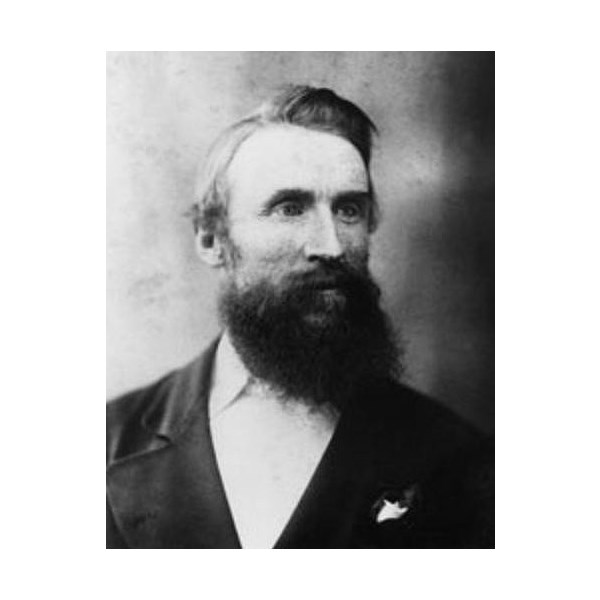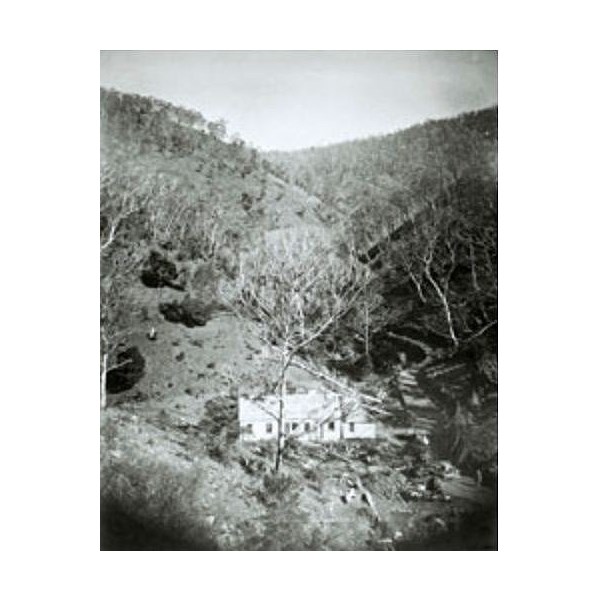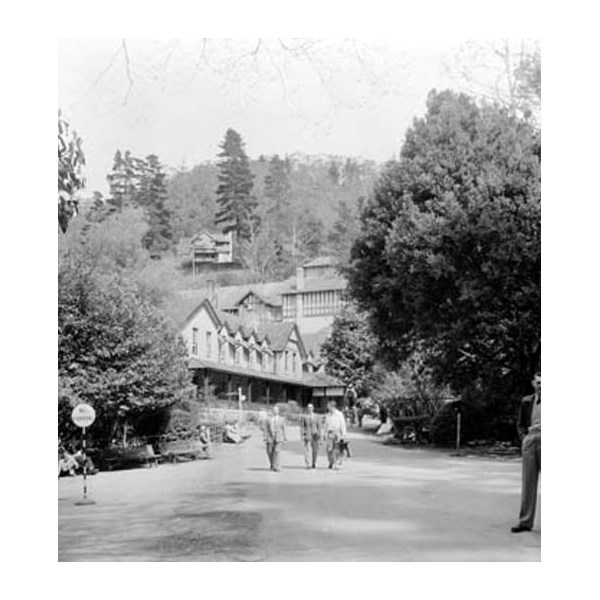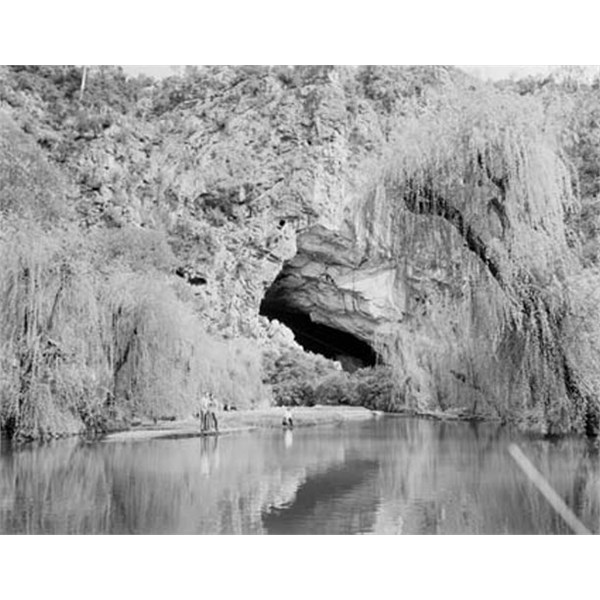Jenolan Caves were known to the local Aboriginal
population for many thousands of years as Binoomea, "Dark places".
European involvement in the area began in 1838, with the first recorded discovery by a local pastoralist, James Whalan. However, according to legend, Whalan was not the first European to set eyes on
the caves. That honour goes to James McKeown, an ex-convict and possibly an outlaw, reputed to have been using
the caves as a hideout. Over the succeeding years, James Whalan and his brother Charles discovered several openings. The Elder
cave was discovered in 1848. It was the first "dark cave" explored.
In 1860, the Lucas
cave, largest of the current show caves, was discovered by Nicholas Irwin and George Whiting. It was not until 1866 that
the caves were brought under direct government control. In 1867, Jeremiah
Wilson was appointed as 'Keeper' of the 'Binda', or 'Fish River' Caves. The Aboriginal word 'Jenolan' (high mountain) was not adopted until 1884.

Jeremiah Wilson , The first official Cave Guide

Jenolan Caves staff 1890s

Jenolan Caves post office, 1897
Despite government control,
the caves initially enjoyed little protection. In the early years, visitors were free to break formations and take souvenirs from
the caves. Damage is visible today, in caves including the 'Elder' and the 'Lucas'. It was not until 1872 that this practice became illegal, thanks largely to the efforts of John Lucas, the local member of Parliament. The Lucas
Cave bears his name, to commemorate his part in the preservation of this fragile and irreplaceable environment.
In the 1880s, Jenolan began to emerge as a genuine tourist destination. Jeremiah
Wilson, an extraordinary caver, had explored to the end of the Elder
Cave. In 1879 he had descended a shaft and rockpile to discover the 'Imperial
Cave'. This was soon followed by the discovery of the 'Left Imperial'
cave in 1880. This
cave was renamed the Chifley
Cave in 1952, after Prime Minister J.B. Chifley.
Development began within
the caves, including pathways and the protection of formations. An accommodation house was constructed. In 1887, permanent electric lighting was installed.
Wilson continued his exploration, discovering the 'Jersey
Cave' in 1891 and the glorious 'Jubilee
Cave' in 1893.
The present day Caves House was constructed in 1898' after fire partially destroyed the original buildings. By the turn of the century, Jenolan was a
well established and thriving tourist destination. However, some of the greatest discoveries were yet to come.
In 1903, James Carvossa Wiburd was appointed Superintendent of Caves, initiating one of the most sustained and successful periods of exploration.
Wilson had concentrated his efforts in the northern
limestone. Wiburd, along with Jack Edwards and Robert Bailey, pushed ever deeper into
the caves, south of the Grand Arch.
The 'River' and 'Pool of Cerberus' Caves were discovered in 1903. In 1904, the 'Temple of Baal', 'Orient' and 'Ribbon' Caves were discovered. The time and energy involved in these discoveries cannot be overstated. All exploration was done by candlelight. The discoveries made by Wiburd truly elevated Jenolan to the status of a world class
cave system, with the opening of the River (1904), Temple of Baal (1909) and Orient (1917) as show caves.

Original Caves House

The Caves house, 1952

Entrance to Jenolan caves 1954
The history of Jenolan and the exploration of
the caves is, of course, far from complete. The guiding staff continued to push beyond the known boundaries of the
cave system. For example, guides Ron Newbould and John Culley discovered the Barralong
Cave in 1963. n more recent years, registered speleological societies have explored
the caves, and made discoveries, including the discovery of the Spider
Cave in 1975, by Bruce Welch.
Today, Jenolan is the most popular tourist destination in country NSW, with over 230,000 visitors annually, enjoying the wonders of the eleven show caves, and an ever increasing number entering into the world of adventure caving. Work at
the caves continues, with major upgrading of the show
cave system and the visitor precinct. Over 160 years since the first Europeans stumbled upon the vast openings of the Grand Arch and the Devil's Coach House
cave, the magic of Jenolan is still leaving its mark on visitors. Jenolan is as timeless as it is unforgettable.
.